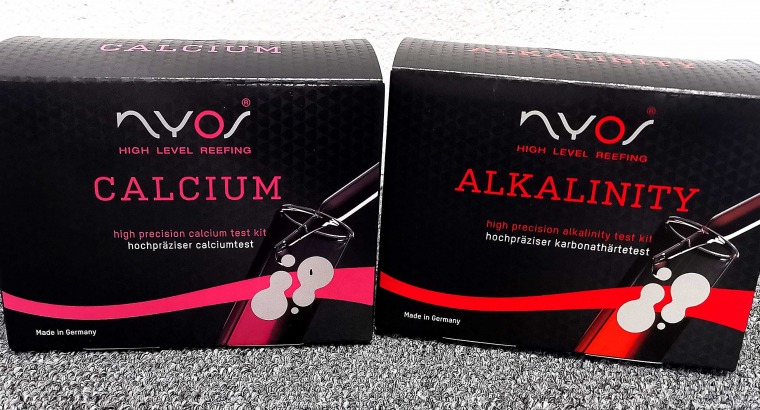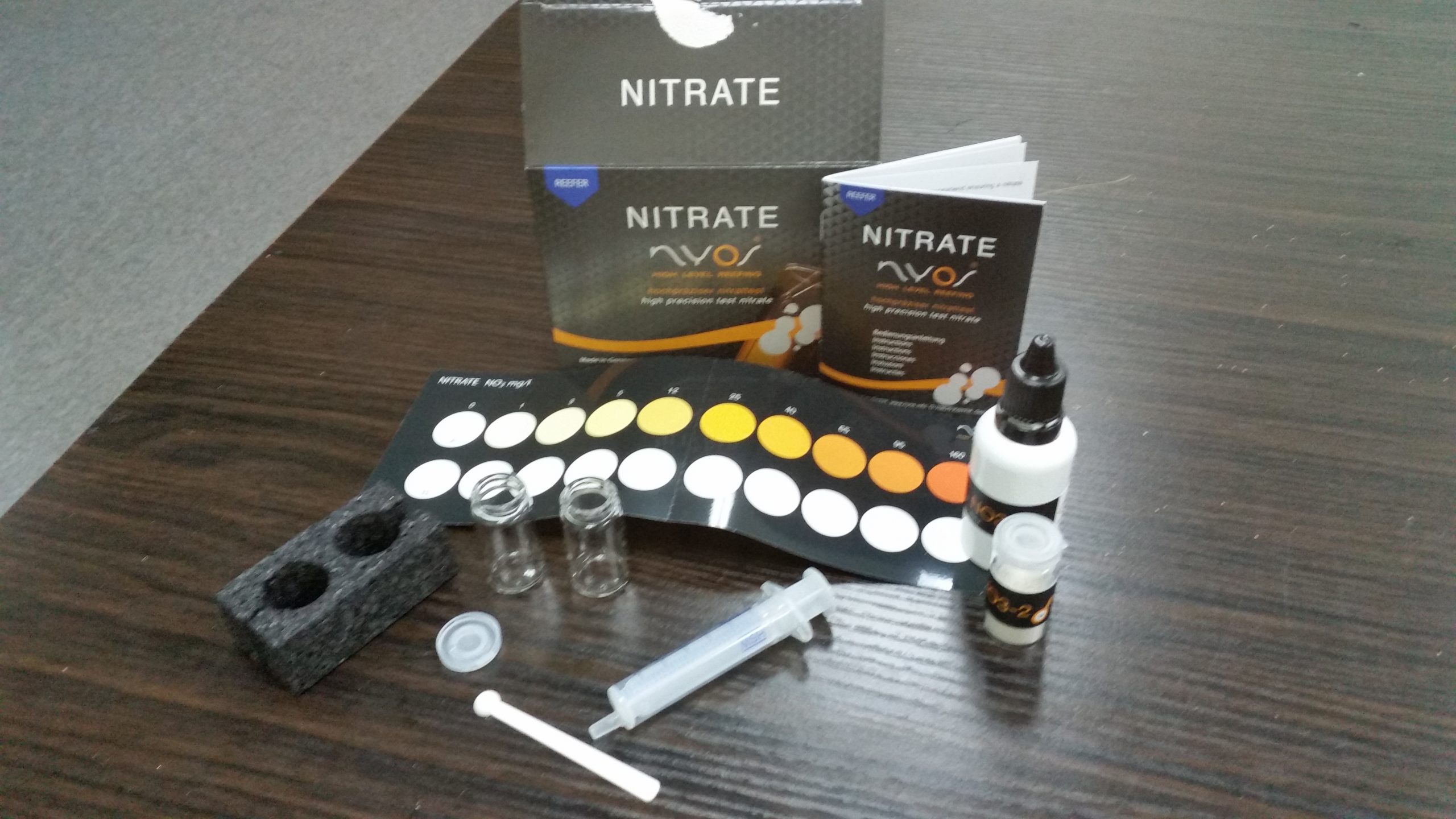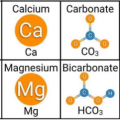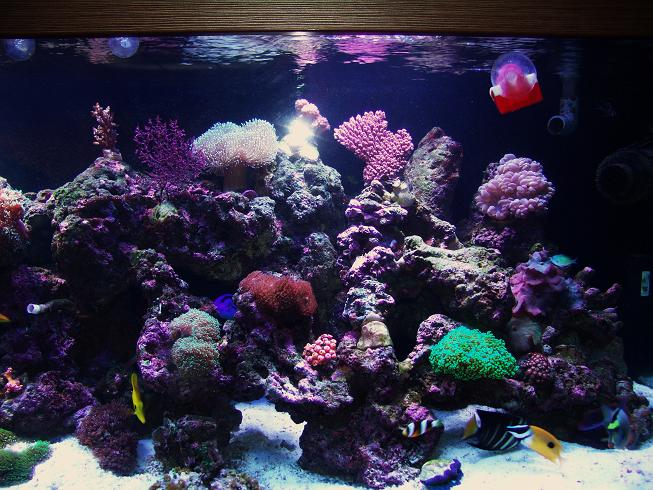Water Test: Is yours working?

Salifert Test kit – One of the popular aquarium water testing brand
For many avid reef keeper, one of the favourite past time is to conduct water test. Since the fishes and corals we keep come from an environment which is very stable, it is meaningful for us to ensure our little water tank imitate the natural environment as much as possible. One of the common methods for us to get that peace of mind is to carry out various water tests.
However, when you get a reading of 1ppm nitrate, or a pH of 8.21, or an alkalinity of 7.50 dkH, how much confidence should we have about the value? In this article, we will briefly look into different types of water test, and appreciate what they can (or cannot) do.
Accuracy vs. Precision
This is a topic which have been discussed repeatedly. In short, an accurate result is close to the actual value, while a precise result means different tests results are close to each other.

For instance, for an aquarium water with a pH of 8.2, a set of test results is {7.8, 8.6, 8.1, 8.0} can be considered accurate but not precise, since the tests averages to the true value, but the results are not consistent (repeatable). A different set of tests has a result of {8.4, 8.4, 8.4, 8.4, 8.4} for the same water. The second test is precise, but not accurate. It is far from the actual value, but repeatable.
A test is meaningful only when it is sufficiently precise and sufficiently accurate for our needs. There is really not need to use a stopwatch to measure the time to braise a chicken stew. Only when we know the test conducted is suitable for our needs, then we can be confident in the result of the test, and then follow up based on the test result.
Another character to consider is the resolution of the test. Resolution is the difference between the two adjacent values. Higher resolution allows us to differentiate two close values, but it does not imply accuracy or precision.
Finally, there is the limit of detection. This indicates lowest possible level to be able to register a reading on the test. Again, this does not imply accuracy or precision, but if the actual value is at or near the detection limit, the test may be difficult to produce usable results.
Water Test Techniques
We shall look at different types of test briefly, so that we can understand the pros and cons of each of them.
Inductive Coupled Plasma – Atomic Emission Spectroscopy (ICP-AES)

ICP tests are currently held as the golden standard of water test. Believe it or not, it has a lot of similarities to the good old neon lights. Water samples are filtered and misted into a jet of plasma. This breaks down everything into individual atom. Different atoms in the plasma emit different wavelengths of light. By detecting the wavelength and intensity of light, we can deduce the amount (concentration) of different elements. It’s not hard to accept that ICP-AES process is extremely competent, but are there any caveats?
- Test protocol: Different test provider may use different protocol for sample preparation. This can affect what goes into the spectrometer.
- Atomic Level: The test is good at detecting elements such as phosphorus and potassium, but cannot detect ions such as bicarbonate (kH) and Phosphate. If an ICP test provide kH reading, it is done the same way as you, through titration.
- Detection Limit and Accuracy: Many elements in ICP are of very low concentration in the seawater, often below the detection limit of ICP-OES tests. In addition, the accuracy of the tests may be quite low in certain cases.
So is ICP-OES useful? I’m not an ICP user, but I do believe there is value in the ICP testing. Not so much as to tell us that the copper level is 10.00 µg/l, but to high light glaring problems in the reef aquarium. In another word, use it, but know what it can and cannot do.
Colorimetric Tests
We now take a look at one of the most common test conducted by aquarists, the colorimetric tests. In essence, colorimetric tests make use of formation of colored dye. The intensity of the color can be linked to the concentration of ions to be tested. After mixing the sample and test agent, we just need to compare the color of the liquid to a chart, and find the closest match. Most of the phosphate and nitrate kits belongs to this category.

There are some challenges inherent with colorimetric tests. More often than not, the color differences are minute at the lower range of the scale, and generally difficult to discern. Coincidentally, many of our interested parameters falls at this lower end. Another obstacle to quality test is the color perception of individuals, poor color vision can negatively impact the test result.
The alternative to “eye power” is the colorimeter. A colorimeter shine a light though the water sample. Some light is absorbed, and the detector picks up the difference. This process eliminates the need for tedious color comparison, however, it also introduce a new set of problems. Bubbles, finger prints, water stain, scratches, all these can reduce the transmitted light into the detector, affecting the result. In addition, if a different cuvette is used for the reference sample, they must be optically matched to ensure accurate results.
Titration Tests
Titration tests works by slowly adding a standard solution (titrant) into a prepared test sample. The volume of titrant used when the color of the sample changes will tell us the concentration of the sample. With proper technique, titration is a very reliable test method. Most kH, Calcium, Magnesium and Potassium kits are titration based.
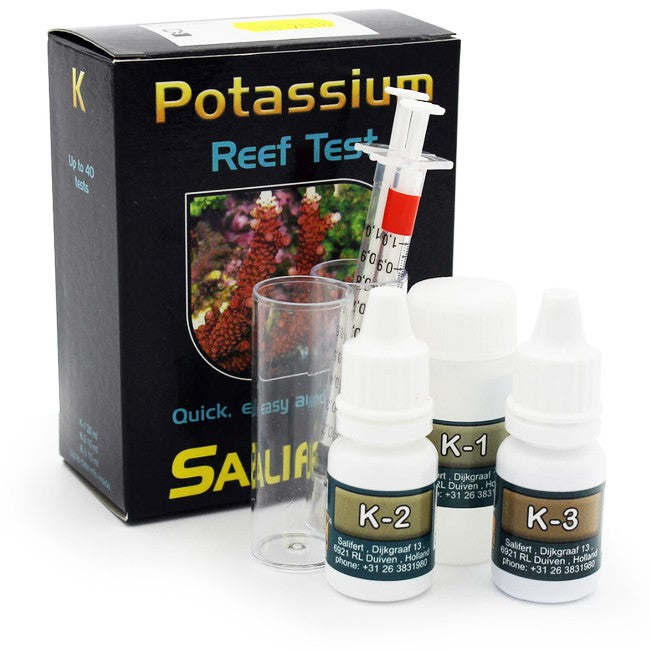
Here are some tips to achieve reliable test results for titration.
- Prepare the pipette as carefully as possible. It’s normal to have an air gap between the plunger and the top of the liquid. However, it is not okay to have air bubbles in the liquid column.
- Use one hand to swirl the sample vial, while using the other hand to dispense the titrant. Take care to minimize titrant landing on the wall of the vial
- It’s sensible to add about 3/4 of the expected volume of titrants quickly. However, the last 1/4 or so must be added drop by drop.
- Mix the sample well after each drop, and follow the test kit instructions. some tests may show a color change, only to disappear when mixed briefly.
- The first drop of permanent color change is the end point of titration. That is where the test should end. It’s okay to add one more drop to ensure the color don’t change any further, but do not count the additional drop into your reading.
Electrodes

Pinpoint pH Monitor, a type of Ion Selective Electrode
With the introduction of reef controllers, electrodes become more and more popular. Aquarists have been using temperature probes to control chiller and heater; conductivity probe to measure the salinity of the water; and pH probes to tune their calcium reactors. The discussion of measurement using electrodes is a daunting endeavor. Let’s just look at some points to note for this article.
- Most electrodes have limited life span. However, for some electrodes, they can be refreshed with a new membrane and filling liquids.
- Most electrodes need calibration with known standards. This ensure the reading is accurate.
- The electrodes needs to be routinely checked for calcium deposits, or algal and bacterial growth.
- Understand that there are inherent inaccuracy in signal processing, Do read up on the technical details if you can find them.
Conclusion
There are much more to discuss about water test techniques. For instance, to know more about refractometer, you can read up on this article by Leon. In any case, as long as we know the limitations of different tests we conduct, and know that they give us reliable enough results for our need, We can have the confidence that we are on the right path, water wise.
